John Fairweather was born in 1867 at 11 Franklin Terrace (now part of Argyle St), Glasgow parish of Anderston after the family moved from St Cyrus in Fife. He had a high scholastic achievement and held a teachers certificate. He was active in amateur dramatics and several photos show him playing parts in various plays.
He attended the College of Science & Arts in 1881, and was articled to James Milne Monro from 16 January 1882 until 1887, remaining as chief assistant thereafter and studying at Glasgow School of Art and the Glasgow and West of Scotland Technical College. He passed the qualifying exam in March 1894 and was admitted ARIBA on 11 June that year, his proposers being William Forrest Salmon, Campbell Douglas and Thomas Lennox Watson. At that time he was still working for Monro and resided at 41 Buccleuch Street. Prior to that he had spent a total of five months on sketching tours throughout Scotland and in England, in particular in Yorkshire and London. He also travelled to Rouen and Caen, France, in 1899 and his sketch book records numerous architectural drawings.
He married Evelyn Ronaldson in 1906 in Forest Hill, London. Evelyn was the daughter of John Ronaldson from Haddington, East Lothian and Anne Victoria Falconer (John worked in London as an East India Merchant). John and Evelyn resided in Stepps, Glasgow and raised their four sons there.
John commenced practice in 1895 in Glasgow and his early independent work consisted largely of tenements for the builders J & T McNair in the east end of the city. He was one of four architects to submit a design for the Glasgow East End Exhibition of 1903. The Building News of 3rdJuly 1903 reported as follows.
“Four competitive designs were submitted to the exhibition council, and from these the council selected those of Mr. Fairweather, as being the most practical and suitable for the exhibition. Much originality and resource was shown in the adaptation of the present buildings and grounds, and in the treatment of the entrance facade and concert-hall.
One of the main attractions of the East End Exhibition was “Buffalo Bill’s” Wild West Show, but in architectural terms, it put John Fairweather centre-stage. In 1909 he was admitted a Fellow of The Glasgow Institute of Architects. In 1913 he was engaged as architect by the cinema-theatre pioneer George Green. In the early 20’s, his sons, Bert and Fred, had the idea of building a huge cinema at the top of Renfield Street, Glasgow. In 1922-23 John visited the USA* to study theatre and cinema design in which he had specialised since joining Green’s. He applied his knowledge to the design of several famous Scottish cinemas – known as Green’s Playhouses. The Glasgow Playhouse was the largest cinema in Europe.
The Playhouse took four years to build and when it opened at the corner of Renfrew Street and Renfield Street in 1927 its seating capacity of 4,368. The ballroom on the floor above could accommodate 6,000 dancers.
The cinema’s decor and upholstery were luxurious and a famous feature was the “Golden Divans” which were popular with courting couples. An orchestra and dancing girls added to the spectacle in the early days but the advent of the talkies, together with increased competition and difficulties in obtaining first-run films, made it difficult to fill the seats.
He also designed the Dundee Playhouse; the Cambuslang Savoy**; the Ayr Playhouse; Pavillion Cinema, Rutherglen; Picturedrome, Tollcross; the Colchester Playhouse (now a Wetherspoon pub) and the Ritz cinemas in Burton on Trent and Wigan, and several others. He also designed the Townhead Library, Glasgow and the Parish Church halls in his home village of Stepps.
The Edinburgh Playhouse, Grade A listed, is the largest and most opulent cinema ever built in Scotland and still survives today in its original form. The only comparable cinemas with a larger seating capacity were the Playhouses in Glasgow and Dundee and in their day, the biggest in Europe, but both now long gone. Another smaller one still survives in Ayr.
The Edinburgh Playhouse is therefore the best surviving example of a cinema designed by John Fairweather and the only surviving example of the ‘super-cinema’, built at a time when maximising the number of seats and creating an expansive and pleasant experience for the patron was the most important factor in cinema design. He also designed numerous other cinemas, almost too many to count. You’ll find a full list of his design projects here
John died 13th January 1942 in Stepps as a result of being knocked down on Cumbernauld Road during a wartime black-out. He was buried in the family plot at Bedlay Cemetery, Moodiesburn.
*Steamship passenger lists record John Fairweather travelling to New York on the 22nd Sept 1923 on the RMS Tuscania. He returned from New York to Liverpool on the RMS Caronia on 28th Oct 1923.
** The Cambuslang Savoy was purchased by Wetherspoon and in 2015 I was asked to formally open the new pub and restaurant. It was a great honour and the superb renovations reflect the high standard of design. It has become a regular place for our family to meet for family celebrations.
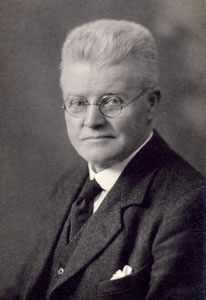
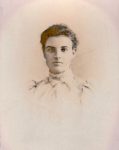
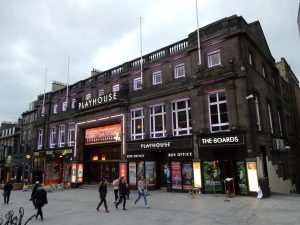
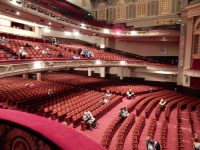
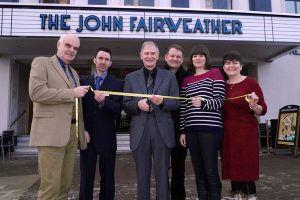
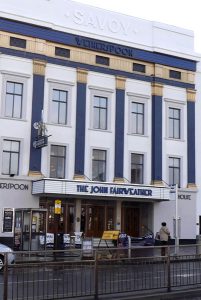
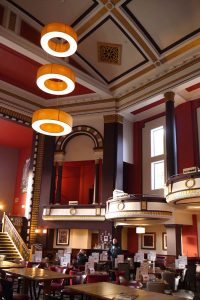

Somehow, I feel that the Fairweathers of Scottish origin and those of English origin do meet perhaps as far back as the 9th century with the invasion of the Norsemen. Really interested in pursing this direction.
So far, the Fairweather DNA study seems to show two separate genetic lines for the English and Scottish lines. As the group of people in the study is small and the science continues to advance, I expect there will be more conclusions as time goes on.
DNA Study at
http://tinyurl.com/FairweatherDNA
I hope there will be more people in the study in the near future!
Pam
GOONS member #4856
fairweather@one-name.org
Thomas Fayerweather, the first confirmed “Fairweather” in America arrived from England in 1630 with the “Winthrop Fleet”. He was born about 1580 in Cleveland, Yorkshire, England and died 1638 in Boston, MA. Thomas married Mary Osborn in Boston in 1634. Mary was born in Salisbury, Wiltshire, England in 1580. Thomas and Mary had three children (two died very early). Thomas established the Fayerweather/Fairweather lineage in the U.S. and in Canada.
The only information we have on the ancestors of Thomas Fayerweather is below. We would really like to know more. If anyone reading this can help it would be very much appreciated. I can be contacted directly at pftutor@comcast.net. Many thanks!
William Fairweather (#1) was Thomas’ s Great grandfather, born. 1517, died (unknown) in England.
William Fairweather (#2) was Thomas’s grandfather, born 1537 in Devon England, died 1626.
William (#2) married Agnes Redwarde who was born 1551 in Devon, England. They had 4 children.
John Fairweather was Thomas’s father, born 1556 in Yorkshire England, died 1621 in Devonshire, England.
John married Mary Webb in 1560. They had 6 children one of which was Thomas, our ancestor.